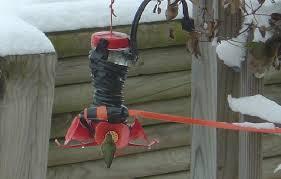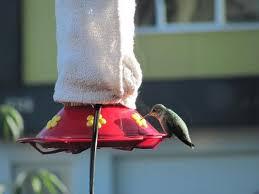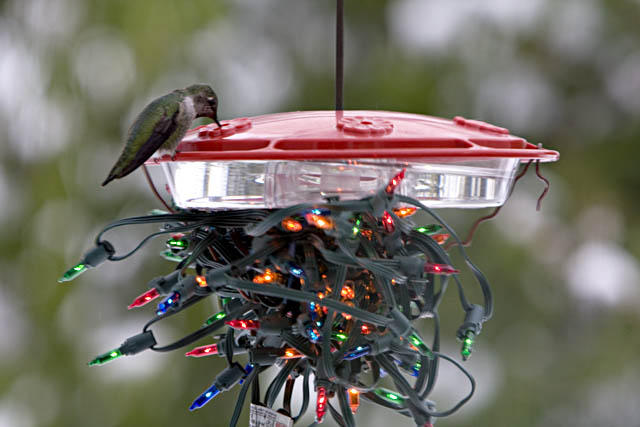Helping Hummingbirds Survive the Winter
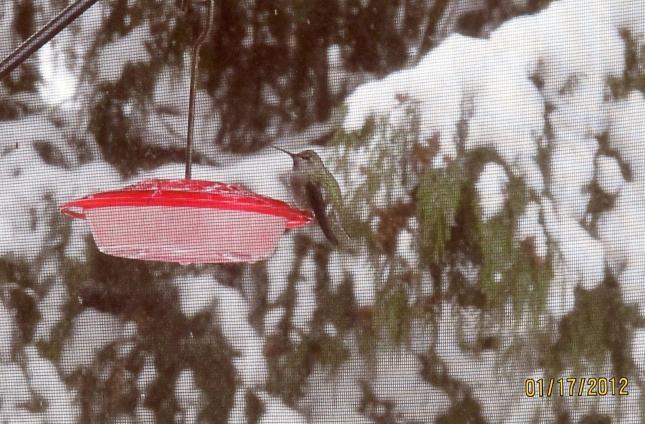 Although this may not seem to make sense, residents of the Abbotsford area know that every November they may be seeing a welcome visitor to their yards. And yes, their appearance does cause a fair degree of panic to some people - hummingbirds are NOT supposed to be here in the winter! But for the past 10-20 years (since early 2000's), the Anna's hummingbird have been calling this part of the valley their winter home.
Although this may not seem to make sense, residents of the Abbotsford area know that every November they may be seeing a welcome visitor to their yards. And yes, their appearance does cause a fair degree of panic to some people - hummingbirds are NOT supposed to be here in the winter! But for the past 10-20 years (since early 2000's), the Anna's hummingbird have been calling this part of the valley their winter home.
And they haven't just been visiting here, they have been thriving. Over the past several years, the numbers of Anna's have been steadily growing - some content to be merely winter visitors while others stay all year and duke it out with those pesky Rufous hummingbirds for a summer yard. We have also seen their range slowly expand outwards from Abbotsford to nearby Agassiz, Chilliwack and Harrison.
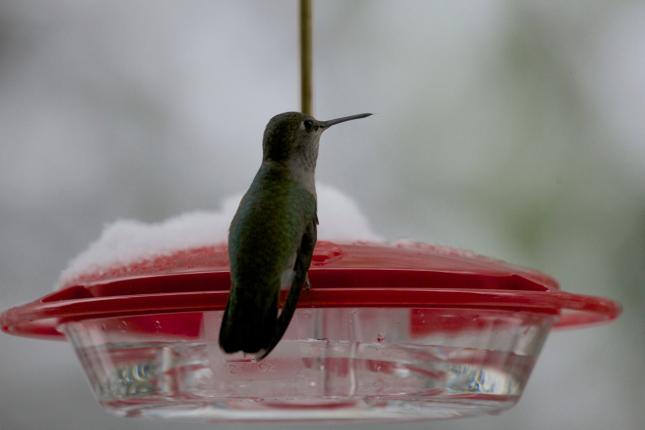
The Anna's hummingbirds have adapted well to surviving in cooler temperatures. They have learned to eat sap from woodpecker holes, small insects found both trapped in the sap and flying free (this hummingbird eats more insects than any other hummingbird species) and there are always some winter flowers, early catkins and of course, feeders. During the cold nights, the hummingbirds shelter in thick shrubs or hedges and enter a torpid state - basically a mini-hibernation where their heartbeat, respiration and metabolic rate approaches zero. Dawn sees them wide awake and hungry. And as long as the temperatures remain seasonal without winds, they do just fine. But when the north wind begins to blow and the temperatures plummet, it becomes very important that their feeders remain ice-free.
Feeding hummingbirds in the winter is possible, although it requires a commitment on your part to feed them all winter long. If you see a hummingbird appear at your window in November and you do not want to feed him in January, do not put out your feeder and he will move onto another yard. Most winters, simply bringing the feeder in at night once they have had their last feeding is all that is required. Re-hang them in the morning with warm solution - when hummingbirds drink cold liquid they can experience a "brain-freeze" (similar to what happens to us when we drink a cold slurpee too fast). Unfortunately, their brain freeze can result in them fainting and falling off the perch so we don't recommend it.
Follow these tips to help your hummingbirds survive.
1) Hang the feeder in a protected spot out of the wind.
2) Bring your feeder in at night to prevent freezing. Hummingbirds do not feed at night. They will feed heavily at your feeders at dusk and then go into 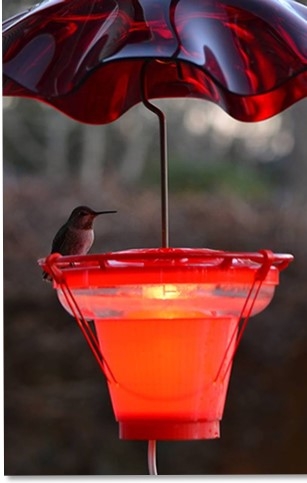 thick bushes, like cedar hedges or junipers, to sleep. While sleeping they enter a mini-hibernation or torpor where their bodies' metabolism approaches zero. So keep their feeders out until 6 pm and then rehang a fresh, warm feeder first thing in the morning.
thick bushes, like cedar hedges or junipers, to sleep. While sleeping they enter a mini-hibernation or torpor where their bodies' metabolism approaches zero. So keep their feeders out until 6 pm and then rehang a fresh, warm feeder first thing in the morning.
3) Use an external heat source to keep the feeder from freezing. This is the most important tip to keep the hummers alive.
: For the basin style feeders, we can now recommend a hummingbird heater, the Hummingbird Hearth Heater (left). Developed in Washington state with the assistance of the Wild Birds Unlimited stores in that area, this heater has a 7 watt bulb that will keep the solution from freezing in most winter weather, colder times (below -10C), we recommend using a 15 watt bulb which is also included. There is now a optional 25 watt bulb for extra cold weather when the other two bulbs aren't doing the job. NOTE: this heater works best used on our Wild Birds Unlimited basin Hi Perch hummingbird feeders in the 8 and 12 oz size.
: Use a spot light with a clamp to shine the light on the feeder. The warmth from the bulb will keep the solution from freezing. (Heat lamps used for baby chicks or reptile houses can be used to provide more heat)
: Other ideas include hot pockets, plumbers tape, wool socks - anything that will keep the feeders warm.
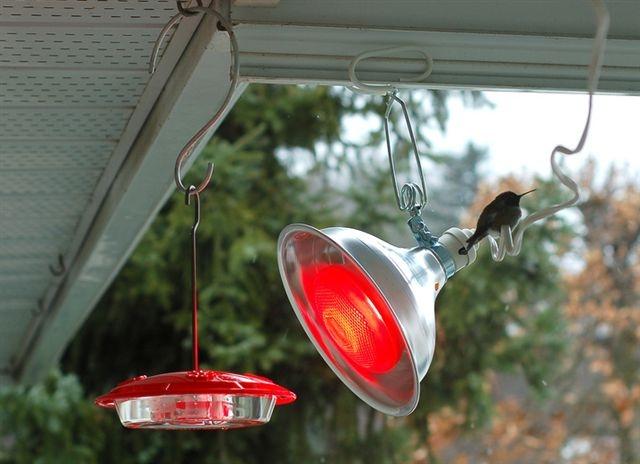 Feeder with heat light
Feeder with heat light
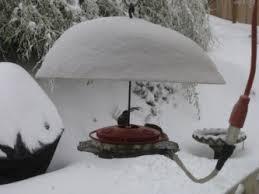 Feeder with heating pad
Feeder with heating pad
Other heating ideas include plumber's tape (top), socks (centre) and Christmas lights (bottom)
